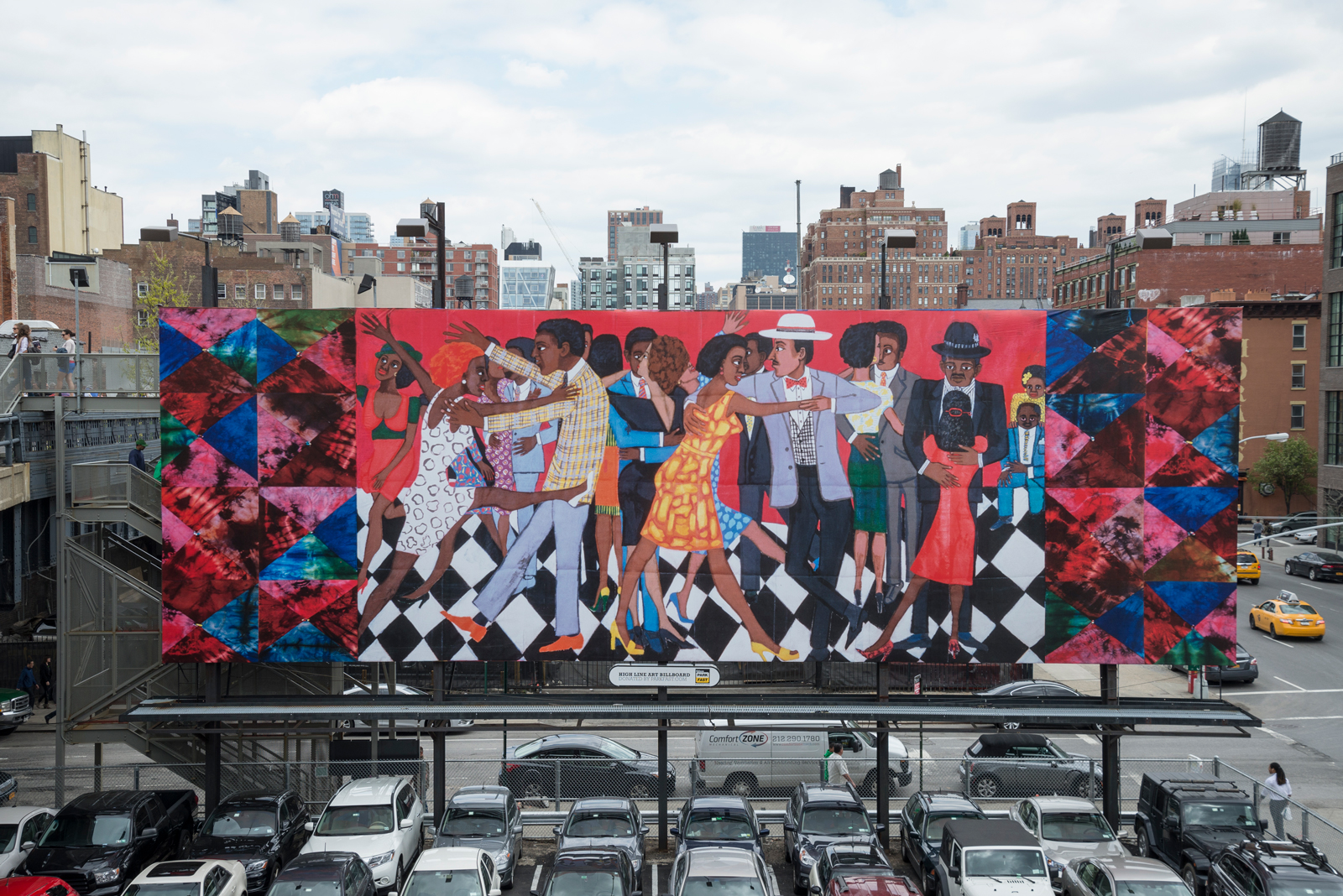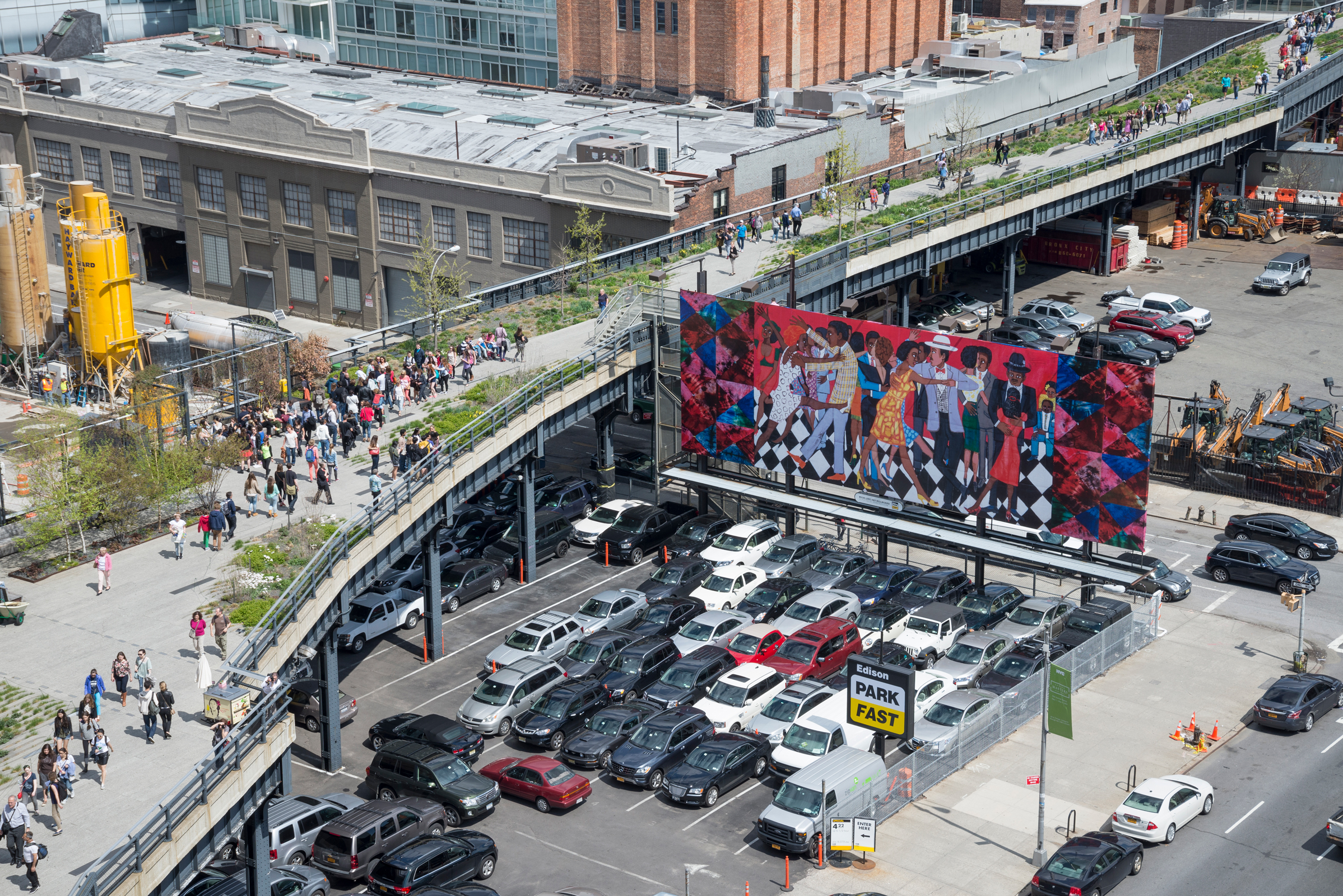
“I grew up in Harlem during the Great Depression,” mixed-media artist Faith Ringgold tells Curlee Raven Holton in the book A View From The Studio. “This does not mean I was poor and oppressed. We were protected from oppression and surrounded by a loving family.”
The Harlem Renaissance was also in full creative flow by the time of Ringgold’s 1930 birth; writer Langston Hughes and bandleader/pianist Duke Ellington were among the local innovators making world-changing statements, while sax improv don Sonny Rollins was a family friend. That scene’s poetic and jazz dynamics, and political activism, resounds throughout Ringgold’s own work, and there is a gorgeous vivacity throughout her creations—in particular, her intricately embroidered and painted story quilts. Many of these folk craft friezes have entwined pop culture and social change (as evidenced by her archive inclusions in major group shows, including the National Portrait Gallery’s Michael Jackson: On The Wall exhibition, and Tate Modern’s 2017 black power blockbuster, Soul Of A Nation. In Groovin’ High
(1986), Ringgold stylishly sweeps the story to the dancefloor.

The title Groovin’ High is Ringgold’s savvy nod to composer/trumpeter Dizzy Gillespie’s 1945 bebop classic; just as the musical piece feels like a refreshing, irrepressible blast, the artist’s sharply dressed women and men pulse with a persuasive energy. They’re portrayed as distinct individuals, even as they’re collectively, joyously lost in this groove; here are agile kicks, close embraces, intimacy and exultation, different shades of blackness together.
Ringgold’s quilts feel steeped in homely traditions, tender bonds (Ringgold collaborated with her mother, fashion designer and dressmaker Willi Posey, on numerous pieces) and neighbourhood pride; they also project a bigger picture from such personal threads. Her figurative lines and bold primary colours have an undeniable child-like quality, but they never feel naïve; nor do the soft materials or hand-dyed borders make her central images any less direct or hard-hitting. They exude real-life experience (including Ringgold’s decades spent as a feminist and anti-racist campaigner) with a wonderful empathy and capacity to tease open our own imaginations.
“They’re portrayed as distinct individuals, even as they’re collectively, joyously lost in this groove”
Groovin’ High offers a more freeform narrative than her celebrated storybooks (such as Tar Beach, featuring eight-year-old heroine Cassie Lightfoot, who soars through Harlem’s summer night skies), and obviously a more upbeat reflection of America than her civil rights-era works Die or The Flag Is Bleeding (both 1967). At the same time, there is a righteous power to her dancers’ exuberance; they are depicted with warmth and a resolute strength, and they seem to come alive in modern “everyday” environments—in 2014, Groovin’ High was perfectly reworked as a larger-than-life frieze above New York’s High Line. Each time you catch this, the groove feels radiant, and spirits keep soaring.





